Are you looking to replace your existing front door?
Or, perhaps you’re looking at choosing a front door for a new build?
There are many options available on the market in the UK.
In this guide (updated for 2020) we’ll attempt to help you make the right choice for your project.
What we’ll cover:
- Door styles
- Common door materials
- Colours & finishes
- Front Door Options
- Environmental and Thermal considerations
- Security
- Technology
- Maintenance
- Guarantees
- European testing
- Price & budget
- Measuring for your door
- Choosing a supplier
Lets begin…
Door Styles
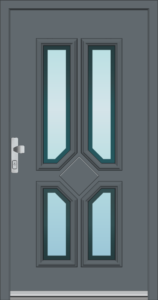
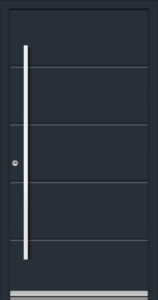
Choosing a front door largely comes down to pairing it with the style of your house or building.
For instance, if your house is a Victorian Semi-detached, in most (but not all) cases a traditional style will suit your house best.
Most doors can be categorised by the following styles:
- Contemporary / modern
- Traditional
Our advice when choosing a style is to decide what will work best with your house. It may seem obvious, but it’s a mistake made by many people.
Get this decision wrong and no matter what else you choose for your door, it will not work in harmony with the design of your home.
The style is VERY important.
Choose wisely.
If you would like to speak to an expert, we are here to help.
Common door Materials

Front doors are available in a variety of materials.
Here are some of the more common:
- Timber / wood
- Solid wood
- Aluminium
- Composite
- uPVC
As opposed to style, choosing the material of your front door can be more about your personal taste.
Having said that, each material will come with its own characteristics, with individual drawbacks and benefits.
For instance:
Timber looks great on modern houses, but can look out of place on some traditional style homes.
Solid wood styles can work great on both contemporary and traditional houses.
Aluminium again tends to work best in a modern setting.
Composite will work in both traditional and modern style houses.
uPVC also works well in both Traditional and modern styles.
Our advice is to think about the options and colours and finishes you may want.
Some options may only be available to certain materials.
For instance, if you are concerned about security and are interested in Keyless entry options, Aluminium would be the best choice.
Colours & finishes
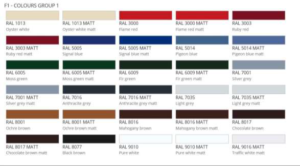
Solid doors can be painted almost any colour to suit the design of your home.
Timber doors are also available in a variety of colours, finishes and types of wood. Cedar can be finished in Honey, ash, crimson and brown.
Aluminium can be customised with standard RAL colours or a special RAL colour in gloss or matt versions.
Our Spitfire S-500 Series have a baked-on powder coated paint finish which guarantees colour durability, weather resistance and low maintenance.
uPVC doors will for the most part only be available in white, and offer limited options.
They will however be least expensive option for those working to a tight budget.
Front Door Options
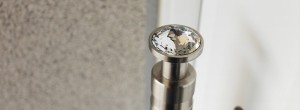
Happily, many options are available to door shoppers these days.
Most manufacturers will offer the following options:
- Handles (Horizontal or vertical bars)
- Glass / lights (side and top lights usually refer to the glass panels at the top or either side of the door. This largely depends on the space you have available at the front of your house.)
- Locks – Keyless entry (more on this later), German engineered precision locking systems are available on most high end Aluminium and Timber doors.
- Crystals – For a more ostentatious look, Swarovski Crystals are a great choice.
- Automatic opening options
Choosing front door options is often the fun part of the door buying process for many customers.
Have fun but keep your budget in mind.
Environment
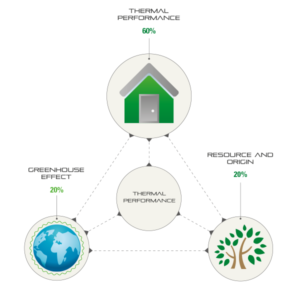
The environment is an important consideration. Insulating your home has never been more important.
Don’t let your front door be the weakest link when insulating your home.
Modern doors can beat or rival the insulation capabilities of cavity walls.
There is also Passive House standards to consider, but more on that here.
The S-400 Series from Spitfire doors has U value of 0.77 W/m²K!
But what is a U value when its at home?
Read on…
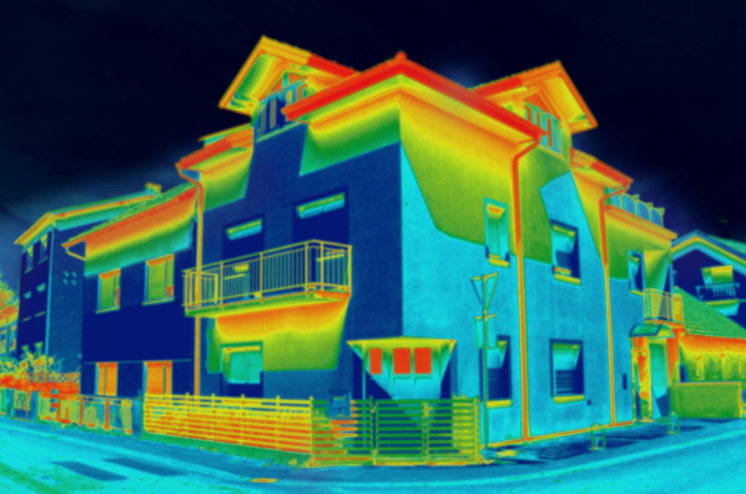
Understanding U values
U-values are a measurement of a materials effectiveness as an insulator. The lower the U-value is, the better it’s insulating properties. For example, a cavity wall has a U-value of 1.6 W/m²
When choosing your door, insulation should be an important factor if you are looking to save money on heating bills (who isn’t?)
U-values are scarcely mentioned by fibreglass and uPVC Composite Door manufacturers due to their construction. Most Timber doors offer very poor insulation and wooden doors struggle to attain any U-value.
Look for a value below 1.0 or less and you will be on your way to a warm home at night.
Security

Most contemporary front doors will offer security of differing levels. A high value home will certainly benefit from additional security.
Some doors are guaranteed to be virtually burglar proof.
A good way to tell if a door is secure is to look for Document Q compliance.
What is Document Q?
Document Q is now part of Building Regulations and sets out standards for doors and windows in all NEW residences.
More from YALE about Document Q compliance
Door Technology
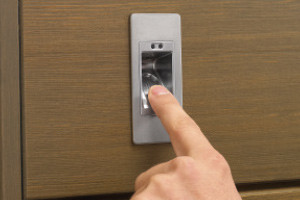
You can upgrade the anti-burglary security on aluminium doors in a number of ways:
- Automatic lock with fingerprint recognition
- Keypad entry
- Bluetooth entry (from your mobile phone)
You can also add LED lighting to aid night time entry.
This can also look very stylish.
Front Door Maintenance
Looking after your front door is absolutely key to retaining its effectiveness in all aspects of its use.
Some simple rules we advise you to follow are below:
- Doors should always be opened and closed in accordance with operating instructions.
- The best method of cleaning aluminium doors is by regular washing using a solution of warm water and mild detergent. All surfaces should be cleaned using a soft cloth or sponge, using nothing harsher than natural bristle brushes.
- Stubborn marks on powder coatings can be removed with methylated spirits.
Guarantees
Most doors suppliers and manufacturers offer guarantees of some kind.
For example, Spitfire Doors offer a full marine guarantee.
Check with your supplier for details before purchase.
What is a marine guarantee?
A marine guarantee relates to products in locations close to the sea.
Salt is not friendly to doors and most companies avoid offering a warranty against it.
Look out for this particularly if you live on or near the coast.
European testing
IFT Rosenheim is the leading European test institute and is located in Germany.
It is recognised as the standard across continental Europe.
What does it involve?
Basically, in a laboratory the door is exposed to varies extremes of weather (wind and rain) and attempted intrusion. In the UK we do the same at BSI, and we test to the level stipulated in the UK Document Q (which is equivalent to the Rosenheim in Europe). All doors now fitted into a new build have to conform to Document Q.
Price
Prices for front doors will vary depending on the material and specification you need.
Typically you can expect to pay around:
£1.5k for a composite door.
£3-5k for a traditional wooden door.
£3-6k plus for a quality aluminium door.
Decide carefully what your needs are and budget accordingly.
How to measure for your new front door
We have put together this handy guide to measuring for your front door.
https://www.spitfiredoors.co.uk/faq-items/how-to-survey-and-measure/
Choosing a front door supplier
Look for an established company with a real world presence or showroom. If you are spending a lot of money on the front door of your dreams you’ll want customer service to match. There are many suppliers out there so there is plenty of choice.
Choice is good.
But beware of internet only suppliers, or suppliers who are difficult to get hold of on the phone.
Call or even better, visit the dealer and they’ll talk you through the buying process.
We hope this guide has been useful.
We are always on hand to offer expert advice when choosing your door.
Call us now on: 01625 412 570
Or email: sales@spitfiredoors.co.uk
We’ll be happy to help.